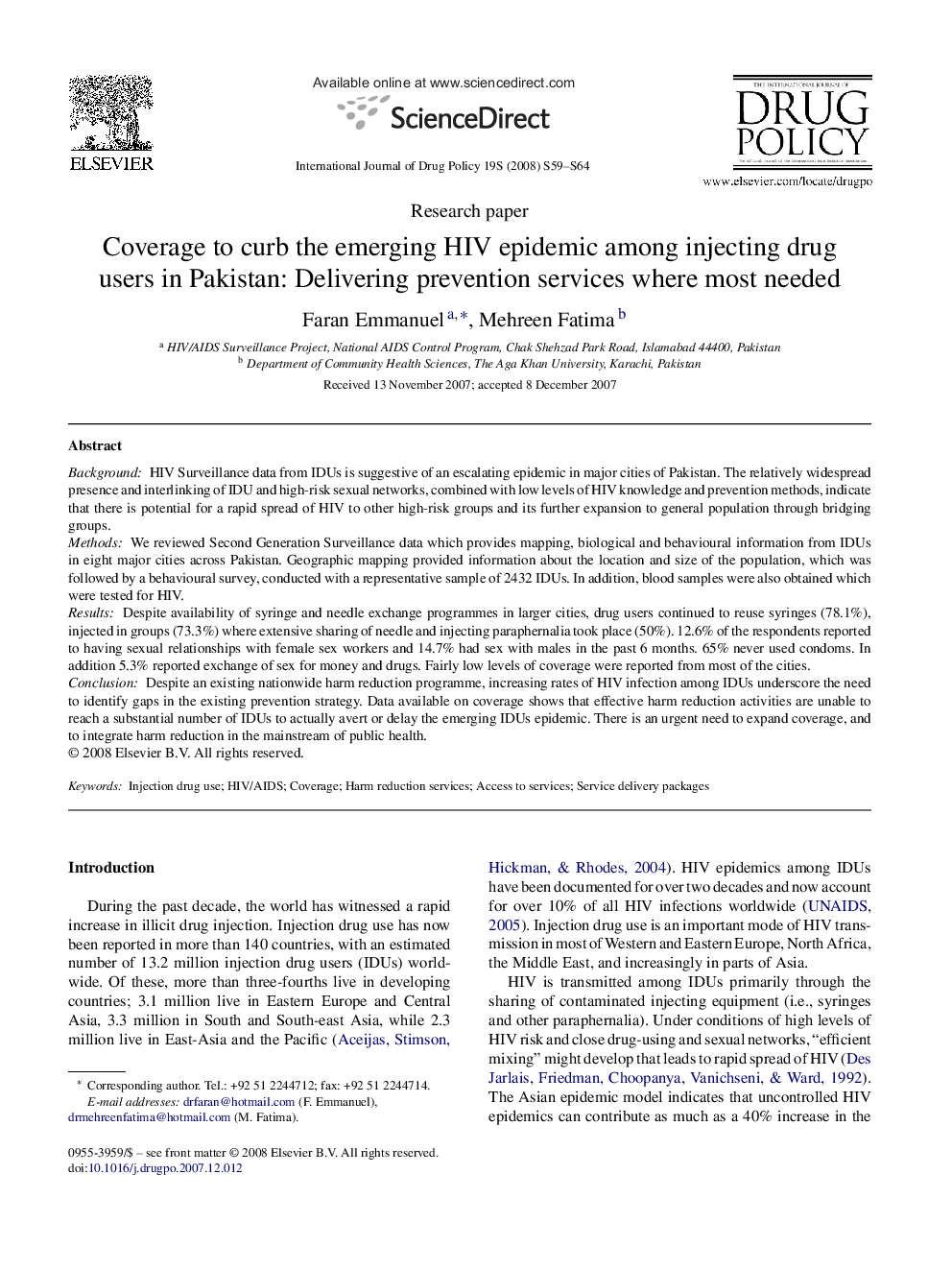| Article ID | Journal | Published Year | Pages | File Type |
|---|---|---|---|---|
| 1075517 | International Journal of Drug Policy | 2008 | 6 Pages |
BackgroundHIV Surveillance data from IDUs is suggestive of an escalating epidemic in major cities of Pakistan. The relatively widespread presence and interlinking of IDU and high-risk sexual networks, combined with low levels of HIV knowledge and prevention methods, indicate that there is potential for a rapid spread of HIV to other high-risk groups and its further expansion to general population through bridging groups.MethodsWe reviewed Second Generation Surveillance data which provides mapping, biological and behavioural information from IDUs in eight major cities across Pakistan. Geographic mapping provided information about the location and size of the population, which was followed by a behavioural survey, conducted with a representative sample of 2432 IDUs. In addition, blood samples were also obtained which were tested for HIV.ResultsDespite availability of syringe and needle exchange programmes in larger cities, drug users continued to reuse syringes (78.1%), injected in groups (73.3%) where extensive sharing of needle and injecting paraphernalia took place (50%). 12.6% of the respondents reported to having sexual relationships with female sex workers and 14.7% had sex with males in the past 6 months. 65% never used condoms. In addition 5.3% reported exchange of sex for money and drugs. Fairly low levels of coverage were reported from most of the cities.ConclusionDespite an existing nationwide harm reduction programme, increasing rates of HIV infection among IDUs underscore the need to identify gaps in the existing prevention strategy. Data available on coverage shows that effective harm reduction activities are unable to reach a substantial number of IDUs to actually avert or delay the emerging IDUs epidemic. There is an urgent need to expand coverage, and to integrate harm reduction in the mainstream of public health.
